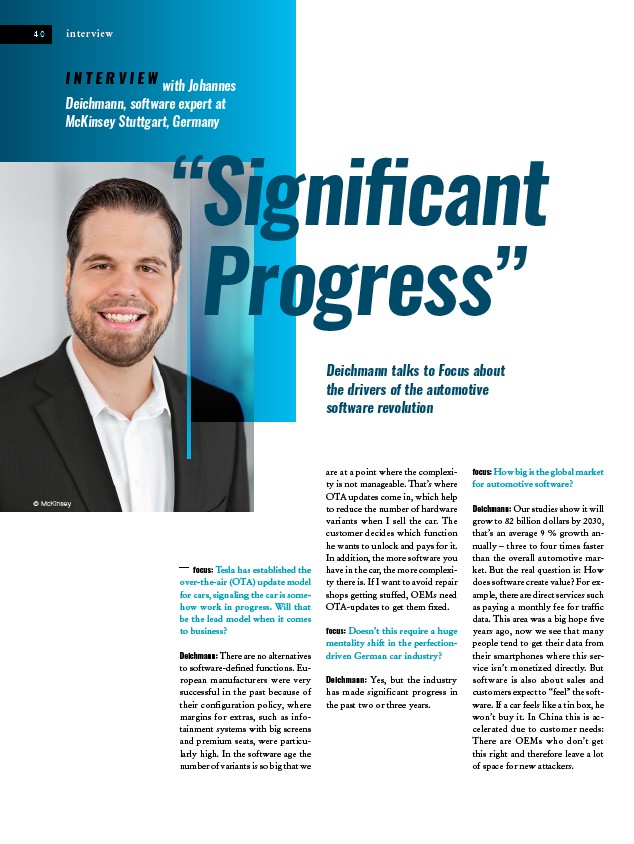
4 0 interview
I N T E R V I E W with Johannes
Deichmann, software expert at
McKinsey Stuttgart, Germany “Significant
Progress”
Deichmann talks to Focus about
the drivers of the automotive
software revolution
focus: Tesla has established the
over-the-air (OTA) update model
for cars, signaling the car is somehow
work in progress. Will that
be the lead model when it comes
to business?
Deichmann: There are no alternatives
to software-defined functions. European
manufacturers were very
successful in the past because of
their configuration policy, where
margins for extras, such as infotainment
systems with big screens
and premium seats, were particularly
high. In the software age the
number of variants is so big that we
are at a point where the complexity
is not manageable. That’s where
OTA updates come in, which help
to reduce the number of hardware
variants when I sell the car. The
customer decides which function
he wants to unlock and pays for it.
In addition, the more software you
have in the car, the more complexity
there is. If I want to avoid repair
shops getting stuffed, OEMs need
OTA-updates to get them fixed.
focus: Doesn’t this require a huge
mentality shift in the perfectiondriven
German car industry?
Deichmann: Yes, but the industry
has made significant progress in
the past two or three years.
focus: How big is the global market
for automotive software?
Deichmann: Our studies show it will
grow to 82 billion dollars by 2030,
that’s an average 9 % growth annually
– three to four times faster
than the overall automotive market.
But the real question is: How
does software create value? For example,
there are direct services such
as paying a monthly fee for traffic
data. This area was a big hope five
years ago, now we see that many
people tend to get their data from
their smartphones where this service
isn’t monetized directly. But
software is also about sales and
customers expect to “feel” the software.
If a car feels like a tin box, he
won’t buy it. In China this is accelerated
due to customer needs:
There are OEMs who don’t get
this right and therefore leave a lot
of space for new attackers.
© McKinsey